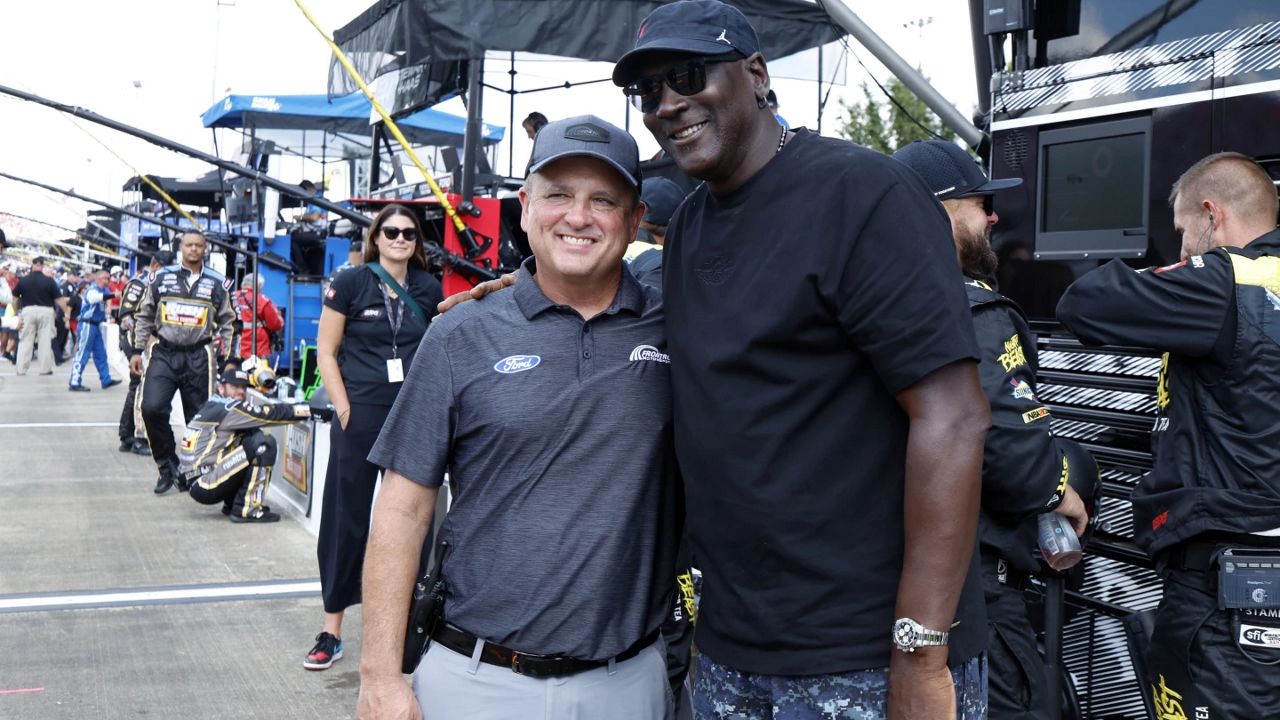GOLDBSORO, N.C. — In January 1961, a B-52 Stratofortress experienced a fuel leak as it flew over eastern North Carolina.
The aircraft was based at Seymour Johnson Air Force Base, and it was carrying nuclear weapons at the time.
What You Need To Know
- Wednesday marks the 63rd anniversary of the B-52 Stratofortress crash over Faro, which killed three people and dropped two nuclear bombs with it
- Joel Dobson, author of "The Goldsboro Broken Arrow," said if the bombs had detonated, they would have caused the worst nuclear disaster in history
- Parts of the second bomb are still buried in the Faro field where it landed, but officials said there are no radiation leaks
The B-52 was instructed to assume a holding pattern, as it attempted to land back at base until most of the fuel was consumed.
On top of that, the leak was worse than the crew originally thought, and the pilots lost control when the right wing broke off.
“There was fire every which way. I saw the plane when it turned over 'cause it lost its wing. The glare from the fire, my bedroom’s walls were as red as blood,” Billy Reeves, who witnessed the plane crash, said.
He said that early morning of Jan. 24, 1961, changed his life forever.
“Of course my momma saw it. She was on her knees praying. She thought it was the end of times,” Reeves said.“Of course my momma saw it. She was on her knees praying. She thought it was the end of times,” Reeves said.
And it nearly was — at least in North Carolina.
“This area right here, within this 50-foot radius, the bomb is in the ground,” Reeves said.
Two nuclear bombs fell from the sky over the Wayne County community of Faro that night — 12 miles north of Goldsboro.
The Faro field still contains buried fragments of one.
“You take 700 miles per hour, it’ll go deep,” Reeves said. The second bomb didn’t have a parachute to slow it down.
The first one did.
“The bomb that didn’t go in the ground, that was hanging in a parachute, amongst a bunch of trees 5 to 600 yards down that woods line,” Reeves said.
The lives of countless people in the state were saved by one man, according to author Joel Dobson, who wrote the book, "The Goldsboro Broken Arrow."
“That guy's name is Bob Peurifoy. He was the director of weapons development at Sandia Labs,” Dobson said. Peurifoy was in charge of safety.
Dobson says the United States introduced 6,000 new weapons during his nearly 40-year career.
“And he drove a lot of people nuts in Washington and in the military, insisting that they add safer devices and safer procedures. Because of him, and people like him, is the reason we’ve never, never had an accidental detonation of U.S. bombs,” Dobson said.
Dobson says the second bomb essentially broke up as it slammed into the muddy Faro field.
He added that part of the bomb containing dangerous plutonium is buried there and could cause cancer if exposed, but explained there is no radiation leak.
But it’s the first bomb, which landed intact with a parachute, that was most concerning.
Dobson said fortunately the switching sequence did not complete because it was never started by one of the crew members.
“If the right wire had short-circuited in the airplane as it was disintegrating in midair and sent a very small electrical current to that bomb, 28 volts, there would have been a detonation. That would have meant the biggest nuclear detonation in the history of the world, a detonation bigger than all the destructive power of all the conventional bombs, ever dropped in war, combined,” Dobson said.
He added that today, the political climate is different.
“I think our next generation coming up has very positive feeling about that. I think they will have the ability to think through situations and the ability to communicate and work out problems in an environment that doesn’t include shooting. If we understand each other better, that can be done,” Dobson said.
This idea contrasts to 63 years ago, when nuclear tension was indeed in the air. And nuclear material was being moved more, and with less safety precautions.
This was a call, far too close, for any Tar Heel’s liking.
“What it amounts to it is it that it be a big crater, all the way to the coast, everything that way would have been gone even up close to Raleigh, so that’s when you get scared, I was scared that night but probably more excited than scared, 'cause it was something we had never encountered before or seen,” Reeves said.
Three out of the eight crew members on board that B-52 tragically died that night.
Dobson is in talks with Hollywood right now about making his book into a movie by the same producers who made "Hacksaw Ridge."








)
